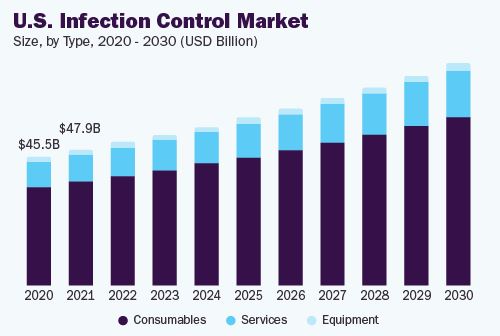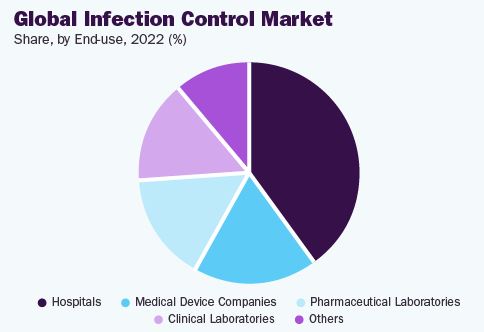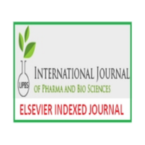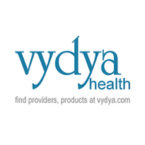Theme: "Advanced Vaccines and Immunization in Disease Prevention"
INFECTIOUS DISEASES CONF 2024
Hearty Welcome!!
Conference Series Conferences are excited to invite all scientists, delegates, students, academicians and researchers from all over the world to attend our “19th World Conference on infectious Diseases, Prevention and Control” scheduled at Rome, Italy during May 16-17, 2024 with the theme “Advanced Vaccines and Immunization in Disease Prevention”.
Target Audience:
- Microbiologists
- Pathologists
- Epidemiologists
- Dermatologists
- Allergists
- Immunologists
- Pediatricians
- Physicians
- Pharmacists
- Neurologists
- Infection Prevention and Infection Control Specialists
- Academic and Health care Professionals
- Research Associates
- Health Care Associations & Societies
- Medical & Pharmacy Companies
- Medical Devices and drug Manufacturing Companies
- Laboratory Technicians and Diagnostic Companies
- Business Entrepreneurs and Industrialists
- Students
The Infectious Diseases Conf 2024 serves as a pivotal gathering, uniting professionals, researchers, and experts in the realm of infectious diseases. These conferences offer vibrant platforms fostering the exchange of cutting-edge knowledge, providing valuable networking opportunities, and encouraging collaboration among individuals and organizations dedicated to investigating, diagnosing, and effectively managing infectious diseases. At the core of this initiative, infectious disease specialists and experts play crucial roles in advancing our comprehension of infectious conditions, refining diagnostic methodologies, and spearheading groundbreaking treatments. The Infectious Diseases Congress 2024 acts as a catalyst, propelling the widespread dissemination of knowledge, forging collaborative partnerships, and accelerating advancements in patient care and infectious disease research. This congress is a dynamic forum driving progress and collaboration in the critical field of infectious diseases.
Associations and Societies:
- Infectious Diseases Society of America (IDSA)
- World Health Organization (WHO)
- Centers for Disease Control and Prevention (CDC)
- European Society of Clinical Microbiology and Infectious Diseases (ESCMID)
- The International Society for Infectious Diseases (ISID)
- The Infectious Diseases Society of Southern Africa (IDSSA)
- Society for Healthcare Epidemiology of America (SHEA)
- The International Society for Influenza and Other Respiratory Virus Diseases (ISIRV)
- American Society for Microbiology (ASM)
- The British Infection Association (BIA)
- Asian Society for Pediatric Infectious Diseases (ASPID)
- International Society of Travel Medicine (ISTM)
- The Australasian Society for Infectious Diseases (ASID)
- Pan American Health Organization (PAHO)
- Canadian Association for Clinical Microbiology and Infectious Diseases (CACMID)
Why to Attend:
This is the finest opportunity to reach the largest assemblage of individuals from the infectious diseases, with members from all around the world dedicated on learning about Infectious Diseases and its accomplishments. At this two-day event, give presentations, disseminate information, interact with existing and future scientists, create a splash with new medicine advances, and get your name out there. This conference features world-renowned lecturers, cutting-edge techniques, discoveries, and the most recent updates in Infectious Diseases.
Track 1: Infectious Diseases, Prevention & Control
Infectiology is the subject of dealing with Infectious Diseases which deals with the diagnosis, control and treatment of infections. Infectious Diseases are also known as communicable diseases or transmissible diseases. Preventing healthcare-associated infections is done in the Infection- prevention & control which is an essential part of the infrastructure of health care. Infection control involves factors related to the spread of infections among patients, from patients to staff, from staff to patients, or among staff. Control of infectious diseases includes washing hands, cleaning, disinfecting, sterilizing, and vaccination.
- Chickenpox
- Common cold
- Flu (Influenza )
Track 2: Bacterial, Viral, Fungal Infections
The disease-causing agents in the organism their multiplication and the reaction of host tissues to the infectious agents and the toxins they produce results to infection. Infections are caused by parasites, virus, bacteria, fungi, etc. Viral infections involve different parts of the body or more than one body part at the same time which may be a runny nose, sinus congestion, cough, body aches etc. Few viral infections like herpes are painful. The pain of viral infections is often shown by the burning or itching on the respective part. One of the common bacterial infection is tuberculosis with the utmost risk factor. The symptoms of a bacterial infection are localized redness, heat, swelling and pain. Pain of the specific body part is the hallmark for bacterial infection. Fungi diseases can cause many different types of illnesses like asthma or allergies, rashes or infections on the skin and nails, bloodstream infections, yeast infections etc.
- Meningitis
- Pneumonia
- Nausea
Track 3: COVID-19, SARS & MERS
Coronavirus disease (COVID-19) is an infectious disease spread in recent times. This disease can be spread, directly or indirectly, from one person to another. Respiratory diseases are the most common symptom observed in infected people. Older people and the people who are suffering from medical problems like cardiovascular disease, diabetes, chronic respiratory disease, and cancer are more likely to be effected. The information regarding the COVID-19 virus should be well informed for the prevention of the virus. Protect yourself and others from this infection. Three primary steps to be taken are washing your hands with water regularly or sanitizing by using an alcohol based sanitizer and do not touch your face. It’s important that you also practice respiratory hygiene and follow social distancing.
- Contagious Diseases
- Coronavirus Vaccine
- Tuberculosis
Track 4: Pediatric Infectious Diseases
An infectious disease related to children is termed as pediatric infectious diseases which are caused in children of different age groups. Pediatric infectious diseases experts deal with the infections occurring in children diagnose and treat to prevent these diseases by evaluating the symptoms. Common pediatric infections include Pneumonia- diagnosed in nearly 2% of infants < 1 year and in 4% of children aged 1 to 5 years. It is estimated that 90% of pediatric pneumonia are caused by viral agents. Otitis Media is an infection observed in children who live with the smoking adults. Innovative primary care is required for all the children.
- Diarrhea
- Dengue
- Neonatal Malaria
Track 5: STD (Sexually Transmitted Diseases) and Control
The condition passed from one person to another through sexual contact is referred as sexually transmitted disease (STD). It is caused by having unprotected vaginal, anal, or oral sex with someone who has the STD. Sexually transmitted infection (STI) or veneral disease (VD) is also called as sexually transmitted disease. STDs can be also be transmitted through sharing needles and breastfeeding. There are few types of STDs like Chlamydia, HPV (human papillomavirus), pelvic inflammatory disease and Syphilis etc.., HPV may lead to oral, cervical, vulvar, penile cancers.
- Human Immunodeficiency Virus (HIV)
- AIDS
- Gonorrhea
Track 6: Food Borne & Water Borne Infections
Consuming contaminated foods or beverages leads to foodborne illness. Causes for foodborne diseases are food contaminants, biological hazards include bacteria, viruses, and parasites. Chemical hazards include natural toxins and chemical contaminants. Physical hazards can include metals, plastic pieces, and broken glass. Majorly these diseases are caused from bacteria, pathogens and virus. The pathogenic micro-organisms like viruses and bacteria that are transmitted in water are responsible for waterborne diseases. Spread of these diseases can be done while bathing, washing, drinking water, or by eating food exposed to contaminated water.
- Cholera
- Typhoid
- Mumps
- Whooping cough
Track 7: Emerging Infectious Diseases & Recent Outbreaks
Emerging infectious diseases are infections that appear in a population. Outbreaks are the occurrence of disease cases in an abundance of what would normally be expected. Ebola infection spreads by contact with blood and discharges that stay on dress, needles and syringes or other medical supplies used to treat Ebola-infected patients, direct contact with blood and secretions. Viruses transmitted basically by aedes mosquitoes, which bite during the day are responsible for Zika virus disease. Symptoms include muscle and joint pain, fever, malaise or a headache. Zika virus infection during pregnancy can result in infant to be born with Zika syndrome like microcephaly and other congenital syndromes. Miscarriage and preterm birth in pregnancy might be a cause of Zika virus. There is a high risk in pregnancy in the outbreaks.
- Ebola virus
- Zika virus
- West Nile Virus Infection
Track 8: Infection Control & Public Awareness
Infection control & public awareness is essential to educate patients, families, guests and careers about human services related infection, what activities medicinal services offices may have set up to ensure contaminations are counteracted however much as could reasonably be expected, and what they can do to restrain the spread of contaminations. Healthcare providers have a social duty to protect patients and prevent pointless damage. In life-threatening emergencies requiring immediate action, healthcare providers should measure the relative risk to patient life and decide the most proper disease control practice under those circumstances. The public should also be aware of the damage that can be caused by neglecting the treatment of infectious diseases.
- Antibiotic
- Antibacterial Agents
- Antifungal
- Antiviral Drugs
Track 9: Drug Interaction in Infectious Diseases
The medical harm which can be majorly prevented is drug interactions in the infectious diseases. Drug interactions represent a major risk to patients. The approved drug product labels for anti-infective drugs, direct-acting antivirals for HCV, HIV drugs unveil that drug interactions present a huge challenge for patients and their healthcare providers. Non-CYP enzymes, CYP enzymes, and changes in gastric pH, the ever-growing list of drug transporters may be the cause of interactions. There are other considerations which incorporate interactions due to food components, herbal medications and biological products.
- Bacteria
- Fungi
- Protoazoa
- Parasitology
Track 10: Infectious Diseases and Vaccines
Microorganisms are the main cause of infectious diseases. There are different types of pathogens like viruses, bacteria, fungi, and parasites. These infectious diseases can spread from one to another, the environment, from animal contact, or from insect bites. Fever, conjunctivitis, diarrhea, fatigue, and muscle aches are the symptoms of many infectious diseases. Vaccines prevent the infectious diseases like influenza, diphtheria, hepatitis b, measles, meningitis, serotype b infection, tetanus, rubella, yellow fever through immunization. Vaccine-preventable disease is referred to the infectious disease for which an effective preventive vaccine exists. If a person procures a vaccine-preventable disease and if he dies from it then the death is considered a vaccine-preventable death.
- Severe Acute Respiratory Syndrome
- Poliomyelitis (polio)
- Measles
Track 11: Infectious Diseases caused by Influenza virus
Influenza is commonly known as flu which is an infectious disease caused by the influenza virus. High fever, runny nose, sore throat, muscle and joint pain, headache, coughing, and feeling tired are the major symptoms which begin after 2 days of the virus attacks and can last more than 2 weeks. In children, symptoms can be diarrhea and vomiting which is referred to as "stomach flu" or the "24-hour flu”. It may include viral pneumonia, secondary bacterial pneumonia, sinus infections, asthma or heart failure.
- Nasal Congestion
- Swine Flu
- Norovirus Infection
Track 12: Respiratory and Blood Infections
The mortality rate of respiratory diseases and blood infections is 30-40% of the effected. Blood infections or blood poisoning occurs when a bacterial infection enters the circulation system from lungs or skin. BSI can be categorized as hospital-acquired, community-acquired depending on the site of receiving infection and hazard factors. Germs that can infect the respiratory framework can spread through saliva from the salivary glands and mucus which is also known as "respiratory secretions".
- Sepsis
- Burning or pain with urination
- Foreign bodies
Track 13: Pathology and Microbiology
Pathology is the study of the origin and consequences of infection or injury. The health practice of pathology is committed to the general study of disease and its processes as well as the specific diagnosis of disease, since pathologists are involved in exploring the clues to diseases and injuries by examining the organs, tissues, body fluids, cells, and molecules. The study of microorganisms such as bacteria, viruses, fungi and protozoa is known as microbiology. It consists of essential lookup on the biochemistry, physiology, telephone biology, ecology, evolution and medical factors of microorganisms. This consists of bacteria, archaea, viruses, fungi, prions, protozoa and algae, at the same time regarded as microbes. These microbes play key roles in nutrient cycling, biodegradation, bio deterioration, local weather change, meals spoilage, and biotechnology.
- Immunization
- Neuropathology
- Pathogenicity & Virulence
- Food Microbiology
Track 14: Epidemiology and Public Health
The department of science which offers with the diseases, viable manages of illness and elements associated to fitness are acknowledged as epidemiology. This helps to understand patterns and determinants of fitness and diseases. This is an essential thing for public fitness as it identifies the chance elements for illnesses and ambitions preventive fitness care. In easy phrases epidemiology is “The learn about of the distribution and determinants of health-related problems and activities in unique populace and additionally utility of the find out about to manage fitness problems”.
- Cancer Epidemiology
- Fatigue Disorders
- Clinical Epidemiology
- Epidemiology of Infectious Diseases
Track 15: Clinical and Case Reports
Case reports may provide a patient's demographic data, but they generally describe an exceptional or original event. Case reports have long been an important part of medical education, since they provide a framework for case-based learning and application. A case report is a complete account of a patient's symptoms, diagnosis, signs, therapy, and follow-up in medicine. Only a few additional case reports include a literature evaluation of previously known instances. Case reports are expert narratives that provide input on clinical practice recommendations and provide a framework for early warning signs of adverse events, efficacy, and cost. They can be disseminated for educational, scientific, or medicinal objectives.
Infection Control Market Size & Trends:
The global infection control market size was valued at USD 214.0 billion in 2022 and is expected to grow at a compound annual growth rate (CAGR) of 6.7% over the forecast period from 2023 to 2030. The market is primarily driven by an increasing number of surgical & clinical procedures that intensively require infection prevention. The high preference is presumed to be a consequence of positive clinical outcomes associated with using infection control. The COVID-19 pandemic has positively impacted market growth as the demand for sterilization and disinfection in hospitals and clinics, pharmaceutical, and medical device companies has increased.
According to CNBC, the manufacturing of sanitizer products witnessed rise of 60% during the pandemic in the U.S. alone. This shows the growth potential for infection control products in the coming years. An increase in outsourcing sterilization services and the introduction of advanced sterilizing solutions are further contributing to the growth of the market for infection control. One of the important growth drivers is the increasing number of government initiatives to ensure highly intensive infection prevention. Government organizations are increasingly involved in issuing guidelines to promote awareness and efficient prevention measures globally, which is expected to contribute to market growth throughout the forecast period. For instance, the World Health Organization (WHO) has issued guidelines for preventing and controlling pandemic- and epidemic-prone acute respiratory diseases in healthcare. The guidelines range from standard precautions such as hand hygiene and usage of personal protective equipment to guidelines for disinfection and sterilization.
End-use Insights:
Based on end use, the global infection control market is segmented into medical device companies, hospitals, pharmaceutical companies, clinical laboratories, and others. The hospital segment dominated the market for infection control and accounted for the largest revenue share of around 40% in 2022 and is also expected to grow at the fastest CAGR of 7.4% over the forecast period from 2023 to 2030. The considerable share is majorly a result of the high probability of getting infected on hospital premises by transmitting blood-borne or respiratory pathogens. Hospital-acquired infections require rigorous control as it is one of the major challenges faced by the market. This has urged public health organizations and hospitals to adopt highly effective control systems. Also, as per research published in NCBI, 40% to 60% of hospital infections were estimated to be at surgical sites.
One of the major concerns is the high probability of infection from pathogens such as drug-resistant, blood-borne, and others in the operating room, because of which the need of the market is growing. For instance, frequent usage of urinary catheters poses a high probability of UTIs and may result in catheter-associated (CA)-UTIs. According to data published by the National Center for Biotechnology Information (NCBI), UTIs account for 25% of all bacterial infections. As per the data published in the National Nosocomial Infection Surveillance (NNIS) system report, the most frequently occurring HAI are associated with CA-bacteriuria and catheterization globally, accounting for 40% of HAIs in the U.S. annually. These factors are expected to widen the future growth prospects of the market. Via www.grandviewresearch.com/industry-analysis/infection-control-market
Conference Highlights
- Infectious Diseases, Prevention & Control
- Bacterial, Viral, Fungal Infections
- COVID-19, SARS & MERS
- Pediatric Infectious Diseases
- STD (Sexually Transmitted Diseases) and Control
- Food Borne & Water Borne Infections
- Emerging Infectious Diseases & Recent Outbreaks
- Infection Control & Public Awareness
- Drug Interaction in Infectious Diseases
- Infectious Diseases and Vaccines
- Infectious Diseases caused by Influenza virus
- Respiratory and Blood Infections
- Pathology and Microbiology
- Epidemiology and Public Health
- Clinical and Case Reports
To share your views and research, please click here to register for the Conference.
To Collaborate Scientific Professionals around the World
| Conference Date | December 10-11, 2024 | ||
| Sponsors & Exhibitors |
|
||
| Speaker Opportunity Closed | |||
| Poster Opportunity Closed | Click Here to View | ||
Useful Links
Special Issues
All accepted abstracts will be published in respective Our International Journals.
- Journal of Infectious Diseases & Therapy
- Air & Water Borne Diseases
- Journal of Bacteriology & Parasitology
Abstracts will be provided with Digital Object Identifier by














